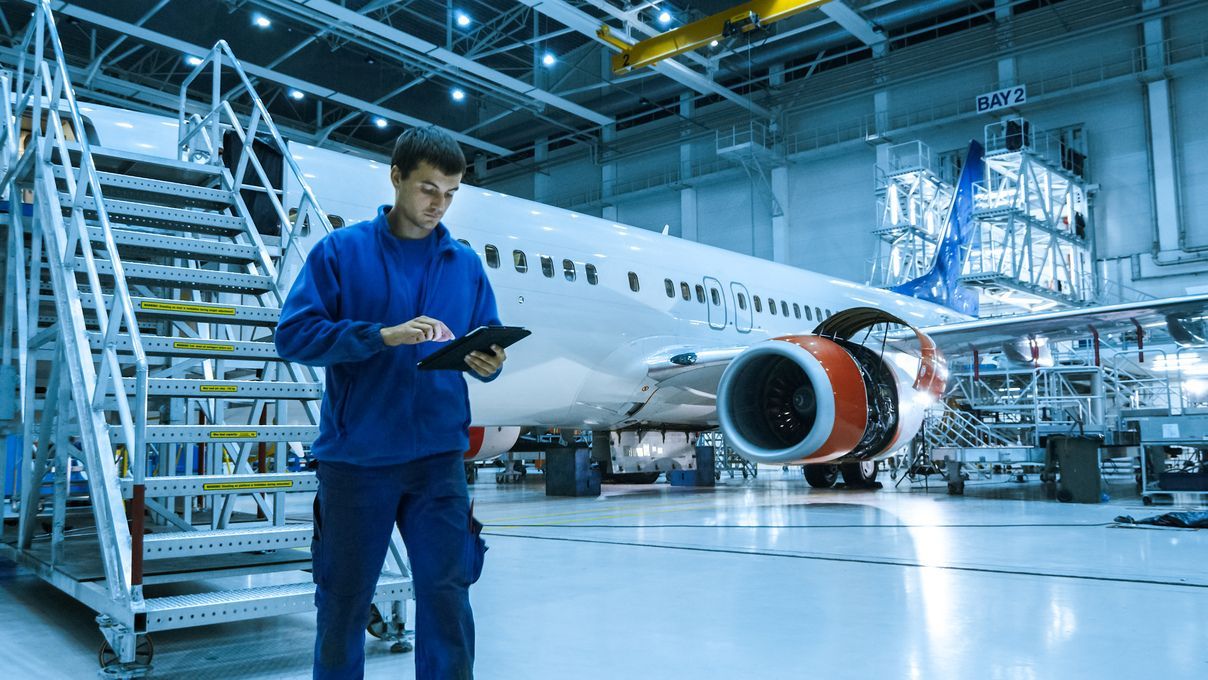The future of MRO: emerging technologies in aircraft maintenance

The aircraft maintenance, repair, and overhaul (MRO) industry is undergoing a technological revolution as companies adopt advanced technologies to improve efficiency and streamline processes. One such technology is augmented reality (AR), which is being used to simplify the complex process of wire installation. AR systems and smart glasses provide a natural means of interaction, allowing technicians to use simple gestures for creation and alteration of holograms. With the help of these technologies, wire installation can be completed in 25 percent less time and with zero error rates.
The AR system also helps technicians to create 3D drawings based on wire definition plans, which are presented to the end-user on a wearable device. These 3D drawings are spatially aligned to an aircraft, making it easier for technicians to understand the layout of the aircraft and where the wires need to be installed. This technology is not only beneficial for wire installation but also for other maintenance and repair tasks that require a deep understanding of the aircraft's layout and systems.
Another technology that is being adopted by MROs is big data. The proliferation of sensors on modern aircraft, combined with better data routers, has led to a 60-fold increase in the data parameters collected from each flight. With over 38,000 new aircraft expected to be in operation worldwide by 2025, the amount of data generated by these aircraft will be significantly higher than that of previous generation aircraft. The latest engines will be generating one terabyte of data each cycle.
MROs are turning to technologies such as artificial intelligence, big data, machine learning, deep learning, neural networks, and blockchain to better manage and analyze this deluge of data. By utilizing these technologies, MROs can gain a deeper understanding of the data generated by aircraft, which can help them to identify patterns and trends that can be used to improve maintenance and repair processes. They can also use this data to predict when certain components may need to be replaced or serviced, reducing downtime and increasing the efficiency of their operations.
Blockchain technology is also being considered by MROs as a way to manage and secure the large amount of data generated by aircraft. Blockchain is a decentralized ledger system that allows for secure and transparent transactions. By utilizing blockchain technology, MROs can store and share data with other organizations in a secure and transparent manner. This can be particularly useful for MROs that work with multiple partners and suppliers, as it allows them to share data and collaborate more effectively.
The MRO industry has traditionally been heavily dependent on human labor, but with the adoption of these technologies, it is becoming increasingly automated. This automation will help to reduce labor costs and increase efficiency, making MROs more competitive in the market. Furthermore, industries such as the pharmaceutical and medical device industry may also be adopting similar technologies, creating a shakeup in the industry.
In conclusion, the MRO industry is undergoing a technological revolution as companies adopt advanced technologies such as augmented reality, big data, artificial intelligence, machine learning, deep learning, neural networks and blockchain to improve efficiency and streamline processes. These technologies are helping MROs to better manage and analyze the large amount of data generated by aircraft, reducing downtime, and increasing the efficiency of their operations. By embracing these technologies, MROs can remain competitive in the market and adapt to the growing complexity of their businesses.
